Viscosity printing is a process that uses different viscosities (stickiness) of ink to enable you to ink up a plate with more than one colour – the different viscosities of ink will not mix. The foundations of this method can be used to create monotypes where a greasy medium can be used to resist ink.
For this method, we are using a lip balm! This is an old petroleum-based lip balm. Its greasiness will resist an oil-based ink. Vaseline can also be used and applied using a brush or your fingers.
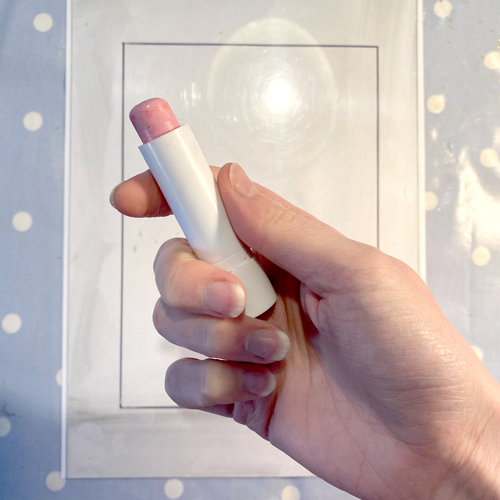
Draw with the greasy medium onto an Inking Plate, sheet of acetate or toughened glass. Remember that the final print will be a mirror image of what you draw! This lip balm is slightly tinted which makes it easier to see where the lines have been made. It is likely that tints will show up slightly in the print so lipsticks are not advised!
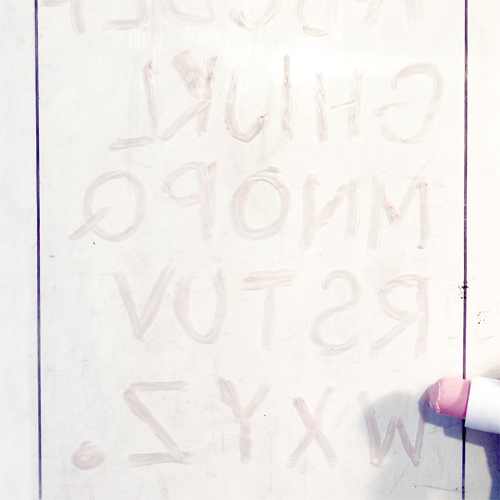
The drawn marks will repeal the ink. When printed onto white paper, these marks will remain white.
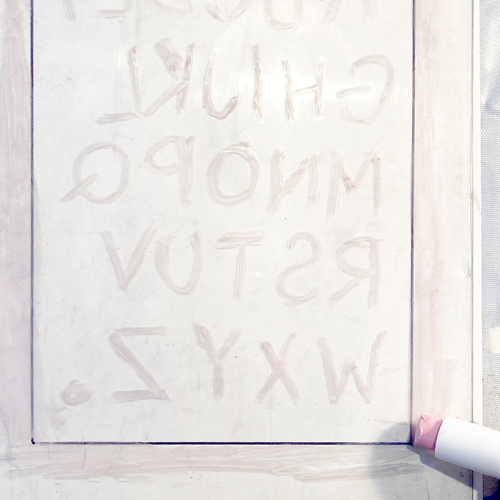
Roll out a thin layer of oil-based ink. We are using Caligo Safewash Relief Ink. Results from other inks may vary – have fun and experiment! Try to roll the roller down the plate only once – too many times will cover up the marks. The roller will also pick up some of the grease and set it down in unwanted areas if the roller is overused.
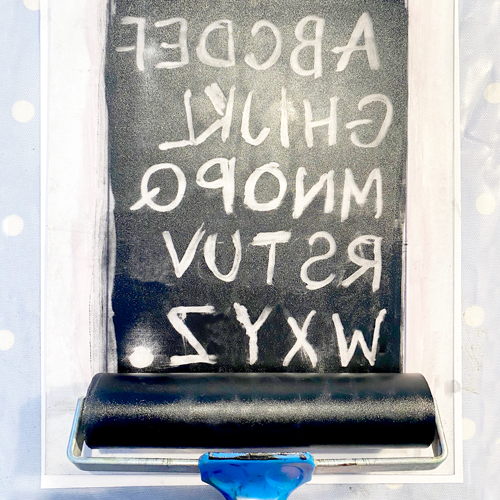
Lay a sheet of thin paper over the top of the print. Use the heel of your hand or a barn to rub all over the back of the print, covering every area firmly. Peel off the paper to reveal the print!
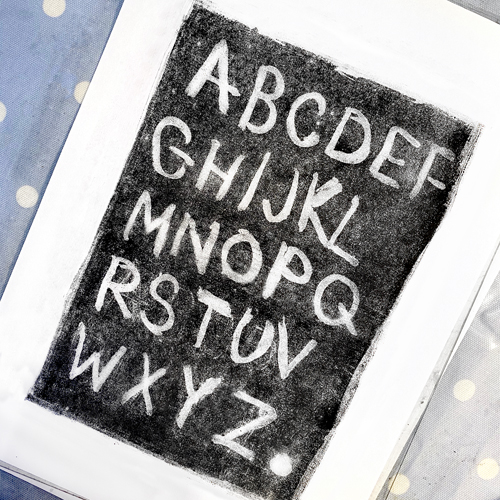
Remove the excess ink from the plate with a drop of oil and a rag. Wipe the plate clean with soap and water and dry before using it for the next print.
Experiment with mark-making, drawing images and text (backwards of course). Apply the balm to your fingers and fingerprint onto the plate before inking up. The Curious Printmaker has even tried this using faces!

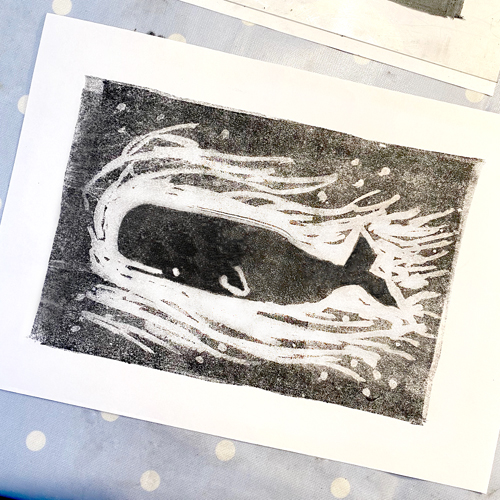
For this project you will need:
- Inking Plate, sheet of acetate or toughened glass
- Lip balm or Vaseline
- Caligo Safewash Relief Ink
- Roller
- Inking Tray or Plate to roll out ink
- Paper to print onto (we used 80gsm copy paper)
- Soap, oil and a rag to clean plate between prints
